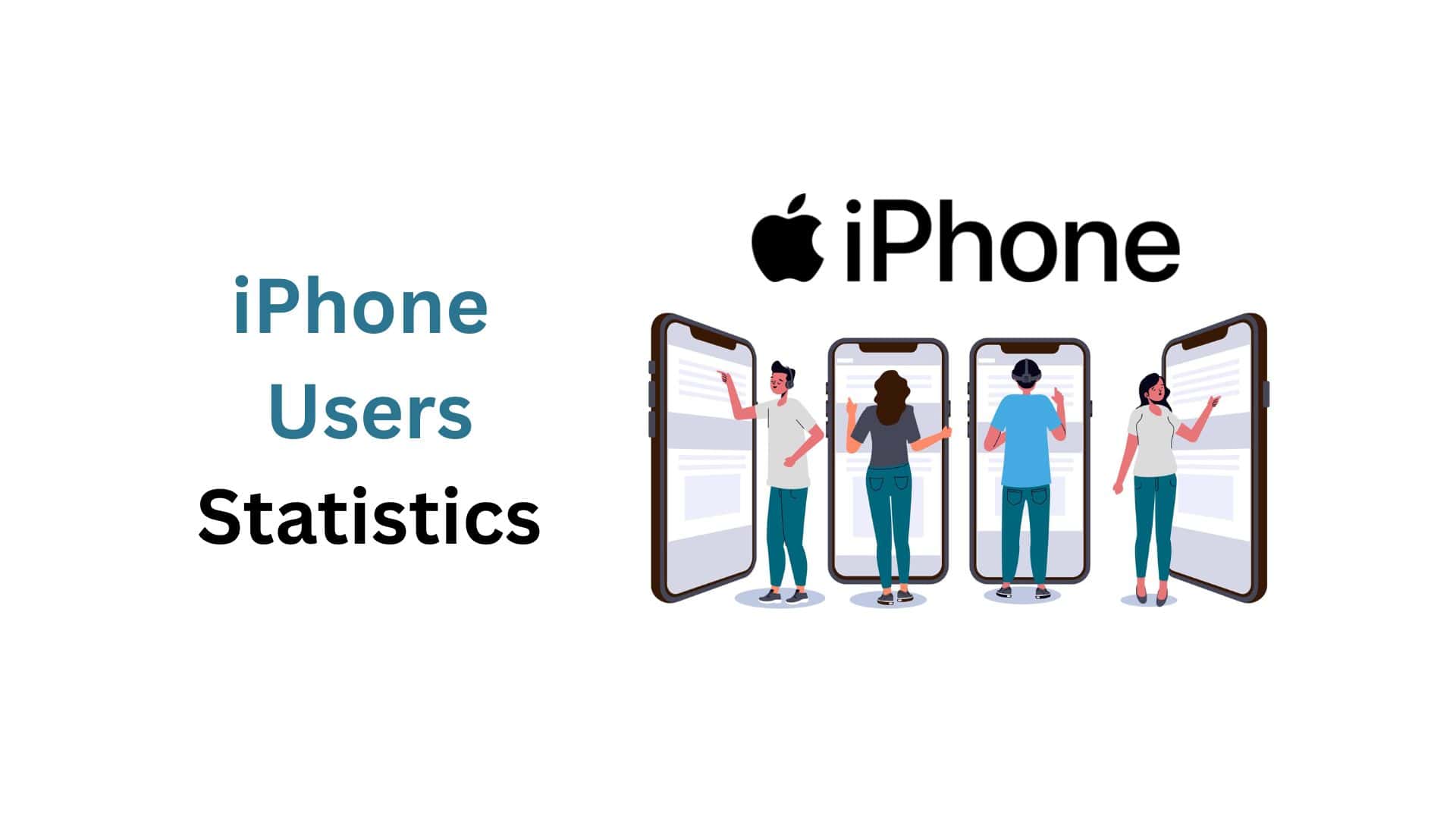Live Streaming Statistics and Facts (2025)

Updated · Nov 19, 2025


WHAT WE HAVE ON THIS PAGE
Introduction
Live Streaming Statistics: Do you think live streaming is still just about watching people play video games? That question, once a fair query, is now thoroughly obsolete. Over the past few years, the live streaming landscape has changed, from a niche digital pastime into a multi-hundred-billion-dollar global economic engine.
What fuels this explosive growth? It’s because of the right tech advancement, the widespread rollout of 5G networks, the increasing dominance of the mobile device in our daily lives, and the core human desire for authenticity and immediate connection.
Creators and brands have realized that live content generates engagement levels 3 to 10 times higher than pre-recorded video, which simply cannot be matched by static content. So, this in-depth analysis will discuss up-to-date data.
We’ve gathered the most crucial figures for live streaming statistics, especially on market valuation, platform dominance, monetization trends, and the forces of live commerce and AI integration. These live streaming statistics are designed to help creators, marketers, and investors with the insights needed to not only understand the landscape but to master it. So, let’s get started.
Editor’s Choice
- More than one-fourth, 28.5% of all global internet users, tune into a live stream at least once every week, cementing its status as a core media habit.
- Global audiences consumed an astounding 5 billion hours of live-streamed content in Q2 2024 alone, marking a sharp return to growth after a post-pandemic plateau.
- The global live streaming market is valued at approximately $100 billion in 2024 and is forecast to rocket to $345 billion by 2030, representing a 23% Compound Annual Growth Rate CAGR.
- Approximately 27% of all global live stream viewing occurs on mobile devices, a figure that is consistently accelerating due to improved mobile network quality and accessibility.
- Viewers typically spend 3 times longer watching a live broadcast compared to on-demand video, proving the magnetic pull of immediacy.
- The global livestream e-commerce market is projected to skyrocket from $20.75 billion in 2025 to an astonishing $287.17 billion by 2034, with a 9% CAGR.
- The niche Live Streaming Pay-Per-View PPV market is expected to surge from $1.5 billion in 2024 to $5.5 billion by 2033, with sports and concerts leading the charge.
Media Streaming Market Size
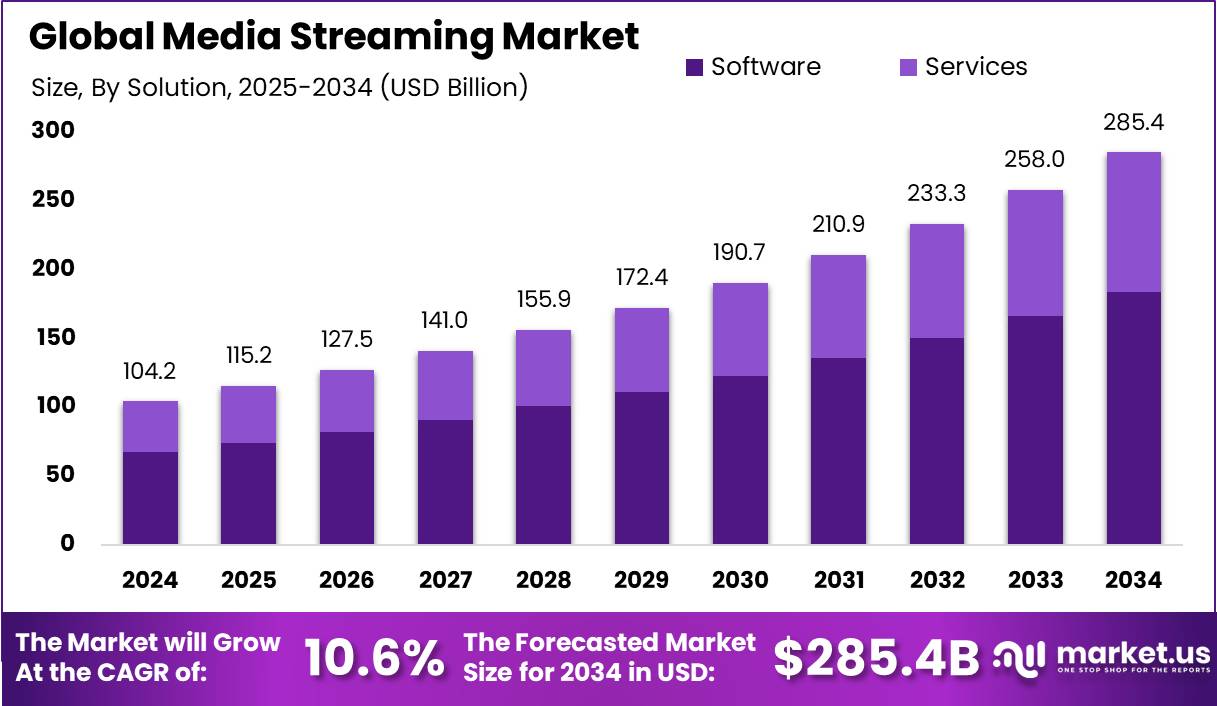 (Source: market.us)
(Source: market.us)
According to Market.us, and other market reports indicate that the scale of the live streaming market is its most compelling feature. The data shows not just a massive current valuation, but a projected expansion that dwarfs most other digital media segments, confirming its status as a core digital infrastructure.
- The global live streaming market is officially valued at nearly $100 billion $99.82 billion in 2024.
- The market is on an aggressive trajectory to reach $345 billion by 2030, sustained by a formidable projected CAGR of 23% across the 2024-2030 forecast period.
- Total hours watched worldwide grew by 12% in 2024 compared to 2023, totaling 32.5 billion hours, a sharp rebound from previous plateaus.
- Live stream viewership in Q1 2024 was 128% higher than the baseline figures recorded in Q1 2019, illustrating the long-term trend.
- 5% of all internet users globally actively watch live-streamed content at least once a week.
- The average live viewing session is an impressively long 25.4 minutes, showcasing high audience retention and the addictive nature of actual content.
- Live video ranks as the third most popular video format globally, reaching 27.7% of internet users weekly, just behind music videos and general viral clips.
- Asia and the LATAM region lead the world in the growth of live stream viewing time, posting increases of 90% and 70%, respectively, significantly outpacing North America.
- Video quality is the most crucial technical factor for viewers, with 67% reporting it as the most important element, and streams are often abandoned within 90 seconds if quality is poor.
- The rise of live viewing is concurrent with the decline of traditional media, as the share of Americans using satellite or cable TV has plummeted from 76% in 2015 to 56% in 2021.
| Metric | Value | Growth/Trend |
| 2024 Market Valuation | $99.82 Billion |
Strong foundational market size. |
|
Projected 2030 Value |
$345.13 Billion | 23% CAGR 2024 to 2030. |
| Q2 2024 Total Watch Hours | 8.5 Billion Hours |
Equates to over 970,000 years of content. |
|
Weekly Global Viewers |
28.5% of Internet Users | Live streaming is a core weekly activity. |
| Average Session Length | 25.4 Minutes |
Reflects high viewer engagement. |
|
Live vs. On-Demand Watch Time |
3x Longer for Live |
Live immediacy drives retention. |
Platform Dominance and Audience Segmentation
 (Reference: demandsage.com)
(Reference: demandsage.com)
- Twitch retains the overall crown for content hours watched, commanding approximately 61% of the global market share in 2024.
- YouTube Live is Twitch’s most formidable rival, claiming around 23% of the global watch hours, but holds the top spot for total user reach, as 52% of live stream viewers use the platform.
- The newcomer platform Kick saw exponential growth in 2024, capturing between 5% and 6% of total global watch hours.
- YouTube Gaming saw a significant surge in Q4 2024, by a wave of Brazilian viewers, increasing its total hours watched by an impressive 80% YOY.
- The number of unique channels streaming on YouTube Gaming rose by a massive 204.9% YOY in Q4 2024.
- Facebook Live still possesses a vast reach, with 42.6% of all live stream viewers engaging with content on the platform, primarily focusing on general content and news.
- Gen Z, 16 to 2,5, and Millennials,26 to 4,1, form the backbone of the audience, with the 18-34 age group remaining the most frequent viewers globally.
- For Twitch specifically, 70% of its audience falls into the 16 to 34 age bracket, while over 65% of its users identify as male.
- In the U.S. market, YouTube Live is the preferred platform for the 18 to 34 demographic 42%, while Facebook Live attracts the highest percentage of the 35 to 54 age group 45%.
- 47% of U.S. live stream viewers who watch gaming content use Twitch, while 40% use YouTube Gaming.
| Platform | Dominant Metric | Global Watch Hour Share |
| Twitch | Content Hours Watched | 61% |
| YouTube Live | Total User Reach | 23% |
| Kick | Fastest Growth Rate | 5 to 6% |
| Facebook Live | Social Platform Reach | 42.6% of viewers use it |
| Mobile Viewing Share | Dominant Device Trend | 27% of streams watched on mobile |
Monetization and Revenue Stream Statistics
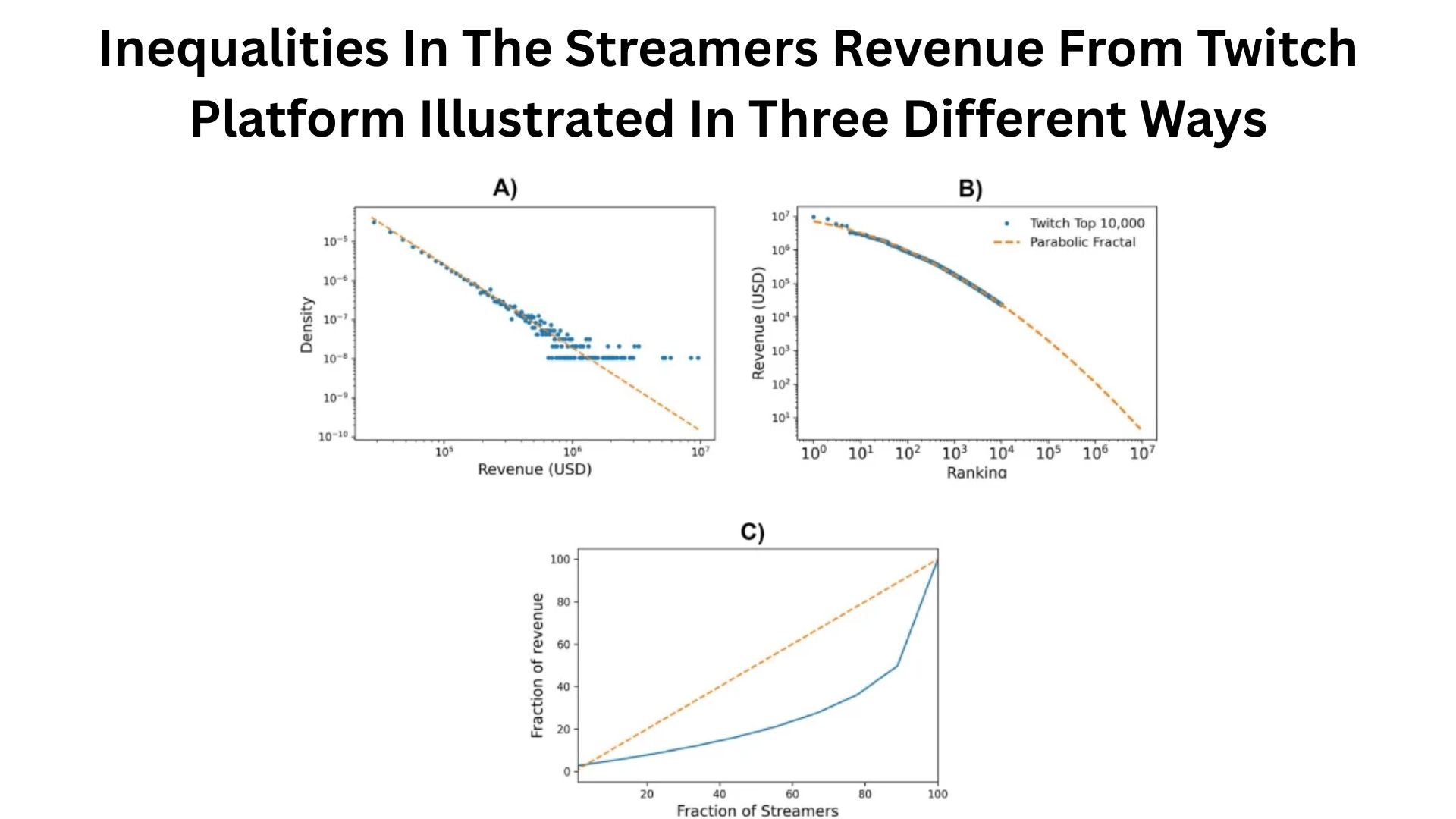 (Source: nature.com)
(Source: nature.com)
- Global Subscription Video-on-Demand SVOD subscriptions surpassed 530 million by the close of 2024.
- SVOD revenue is projected to grow at an 11% CAGR through 2026, aiming for an estimated market value of $95 billion.
- More than 55% of viewers explicitly state they prefer watching advertisements during live streams over paying a subscription fee to access the content ad-free.
- Streaming video advertising revenue is forecast to reach $60 billion by 2025, significantly fueled by the proliferation of AVOD and Free Ad-supported Streaming TV FAST channels.
- Approximately 72% of marketers now believe that video content delivers a higher conversion rate than other forms of digital content.
- Nearly 48% of live stream viewers worldwide are willing to pay for exclusive live content from their preferred creators, sports organizations, or events.
- Over 40% of professional broadcasters have successfully monetized their content using subscription models, with the hybrid AVOD-SVOD approach becoming the industry standard.
- The average Twitch streamer with 10 to 20 concurrent viewers can typically earn between $50 and $100 per stream via donations, subscriptions, and bits.
- Brands invested a colossal $30.10 billion in streaming ads in 2024, a figure that is rapidly catching up to the $60.56 billion spent on traditional television advertising.
| Monetization Segment | 2024/2025 Value | Growth/Preference Data |
| Streaming Ad Revenue | Projected $60 Billion by 2025 | Fueled by AVOD and FAST channels. |
| Global SVOD Subscriptions | Over 530 Million AED 2024 | Expected 11% CAGR through 2026. |
| Viewer Ad Preference | 55% prefer ads over subscription fees. | Strong preference for free, ad-supported access. |
| Viewers Willing to Pay | Nearly 48% | Willing to pay for exclusive live content. |
| Marketers Citing Conversion | 72% | Believe video delivers higher conversion rates. |
| Twitch Monthly Subs | 16 million monthly subscription purchases. | High loyalty and direct creator support. |
Livestream E-Commerce and Pay-Per-View Power
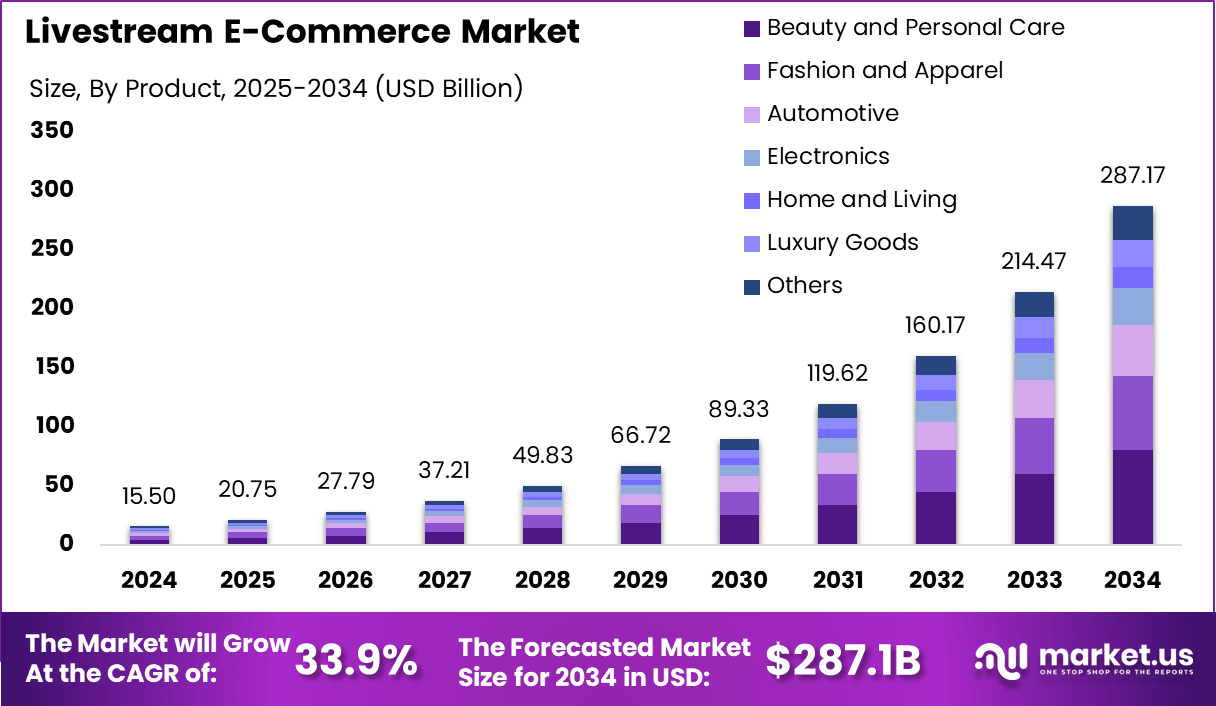 (Source: market.us)
(Source: market.us)
According to Market.us and other reports, beyond entertainment and gaming, the two most aggressive growth verticals are actual shopping and premium content distribution via PPV. These areas represent the strongest commercialization of the live streaming format.
Livestream E-Commerce Market
Livestream e-commerce turns watching into buying in actual. It is the single biggest growth opportunity for brands and retailers in the next decade.
- The global live commerce market size was estimated at $128.42 billion in 2024 and is projected to hit a colossal $2.47 trillion by 2033, with a 39.9% CAGR from 2025 to 2033.
- Asia-Pacific APAC overwhelmingly dominates the live commerce landscape, capturing a massive 66.0% of the global market share in 2024 due to high mobile commerce adoption.
- The Fashion & Apparel product segment leads the market, holding a 21.3% revenue share in 2024.
- Social Media Platforms are the dominant sales channel, accounting for a 42.1% revenue share in 2024 by integrating discovery, community, and commerce seamlessly.
- The U.S. live commerce market is forecast for significant growth at a 37.2% CAGR from 2025 to 2033, by platforms like TikTok and Instagram Live.
- Global live selling adoption has surged by 76% since the COVID-19 pandemic began.
Live Streaming Pay-Per-View PPV Market
PPV allows for the direct commercialization of premium, exclusive content, bypassing traditional broadcast gatekeepers.
- The Live Streaming PPV market is projected to grow from $45.28 billion in 2024 to an estimated $177.50 billion by 2035, sustaining a 13.22% CAGR from 2025 to 2035.
- The Sports segment dominates PPV revenue, projected to reach $25.63 billion by 2024, showcasing a robust 14.5% CAGR.
- The Concerts segment is also a major player, forecast to generate $10.26 billion by 2024, with a strong 12.8% CAGR.
- Online Gaming/Esports is the fastest-growing niche, with PPV revenue anticipated to hit $2.98 billion by 2024, posting a powerful 16.7% CAGR. North America remains the largest single region for PPV revenue in 2024.
| E-Commerce Metric | Value | Growth/Dominance |
| 2024 E-Commerce Market Size | $128.42 Billion | Strong market foundation. |
| Projected 2033 E-Commerce Value | $2.47 Trillion | 39.9% CAGR 2025 to 2033. |
| Regional Dominance | Asia-Pacific | 66.0% global revenue share 2024. |
| Top Product Category | Fashion & Apparel | 21.3% market share 2024. |
| US Market Growth Rate | 37.2% CAGR 2025 to 2033 | Rapid acceleration in the US. |
Enterprise, Marketing, and B2B Live Video Adoption
 (Reference: thunderbit.com)
(Reference: thunderbit.com)
- The global Enterprise Video Platform market was valued at $21.85 billion in 2024 and is forecast to climb to $76.08 billion by 2032, maintaining a substantial 17.2% CAGR.
- The Large Enterprises segment commands the highest market share, holding 64.5% of the enterprise video market in 2024.
- The IT and Telecommunications sector is the largest end-user, accounting for a 26.4% revenue share in 2024.
- The Healthcare vertical is projected to experience the steepest growth, with a 16.13% CAGR through 2030, by telemedicine, patient education, and remote training.
- Over 55% of enterprises use live video specifically for company-wide or departmental broadcasts, confirming its role as a core corporate communication tool.
- Approximately 80% of people worldwide say they prefer watching a brand’s live video over reading a blog.
- Live video campaigns in influencer marketing can achieve double the engagement rates compared to standard pre-recorded video content.
- Video Conferencing is the largest segment by application, holding 42.1% of the enterprise video market share in 2024.
| Enterprise Metric | Value | Growth/Use Case |
| 2024 Enterprise Video Market Size | $21.85 Billion | Strong B2B adoption. |
| Projected 2032 Enterprise Value | $76.08 Billion | 17.2% CAGR 2025-2032. |
| Top End-User Vertical 2024 | IT & Telecom | 26.4% market share. |
| Fastest Growing Vertical | Healthcare | 16.13% CAGR through 2030. |
| Marketing Preference | 80% of People | Prefer live brand video over a blog. |
| Engagement Lift | Double the rate | Live video vs. standard video in influencer marketing. |
AI Integration, FAST Channels, and Future Trends
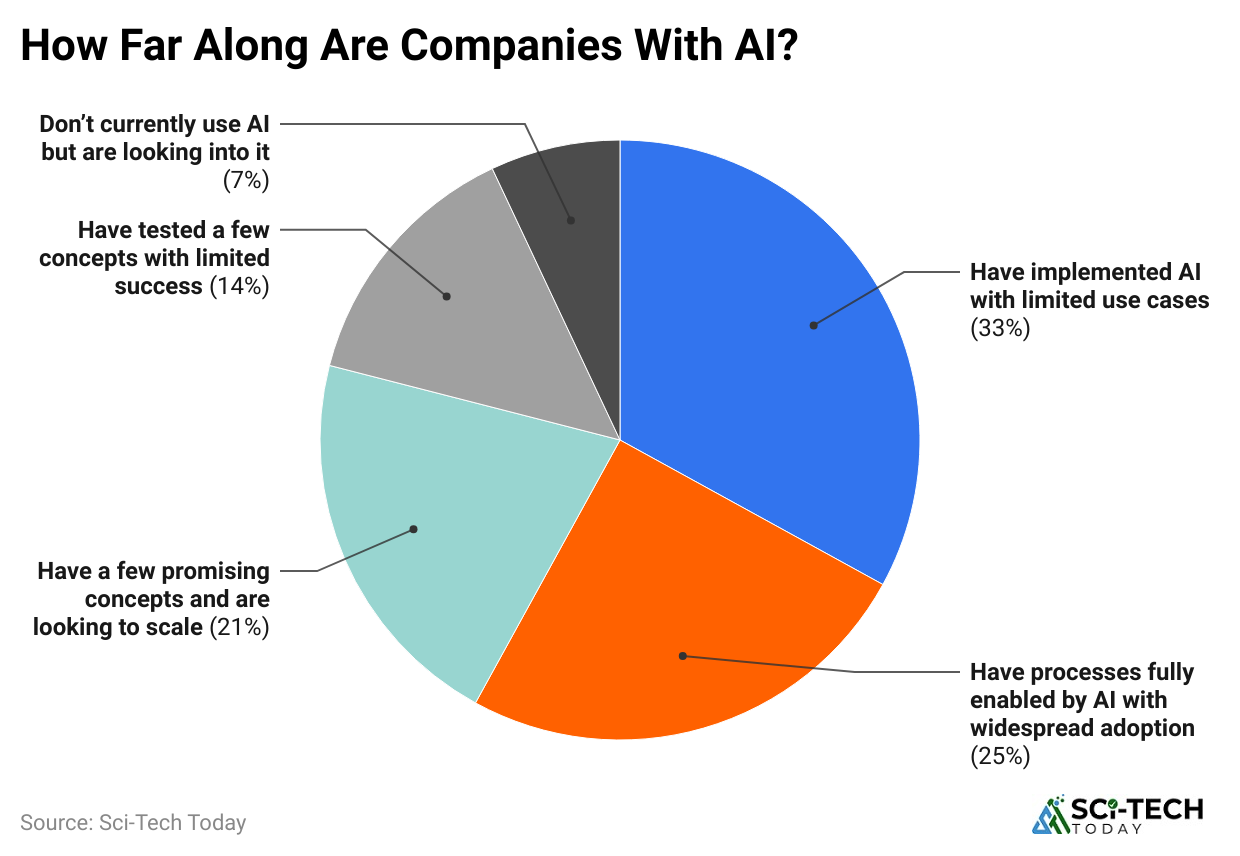 (Reference: zippia.com)
(Reference: zippia.com)
- Over 60% of professional broadcasters are already leveraging AI tools in their live streaming workflows for tasks like automated content tagging.
- AI-powered virtual human streamers, also known as VTubers or AI Streamers, are gaining significant traction, particularly in Asian markets and the gaming vertical.
- The rise of FAST Free Ad-supported Streaming TV channels grew by 35% globally in the past year, offering a familiar, linear TV experience without the subscription fee.
- Hybrid monetization models, which merge the AVOD approach of FAST with premium microtransactions or subscription tiers for SVOD.
- 5G network traffic is projected to be dominated by video content, which could account for up to 90% of all data.
- Interactive video advertising has proven highly effective, driving 47% more engagement time and being 32% more memorable than non-interactive.
| Future Trend Metric | Value/Stat | Impact on Live Streaming |
| Broadcasters Using AI | Over 60% | Automates tasks like moderation and captioning. |
| Global FAST Channel Growth | 35% in the last year | Accelerating the adoption of AVOD models. |
| Interactive Ad Engagement | 47% more engagement time | Key for maximizing ROI in live streams. |
| 5G Network Traffic | Projected 90% from the video | High-quality streaming relies on 5G rollout. |
| Viewer Retention Factor | 30% increase | Achieved by using adaptive bitrate streaming, often AI-optimized. |
Conclusion
Overall, live streaming has moved past being a digital sideline. The next few years won’t just be about growth; they will be marked by a rapid, structural transformation. From the growth projections in live e-commerce to the increasing sophistication of AI-powered broadcasting tools and the consolidation of platform market shares, the opportunity for creators, marketers, and businesses has never been clearer.
Whether you’re a brand seeking to double your engagement, an investor looking for the next trillion-dollar market, or a creator wanting to build a loyal, paying community, the future of content is live.
Use this article as your map to analyze and get clear insights for your creator career. I hope you find this article useful. If you have any questions, kindly let us know. Thanks for staying up till the end and reading all of my gathered information.
Sources
FAQ.
The global live streaming market is valued at approximately $100 billion in 2024. This market is expected to surge dramatically, with forecasts projecting a value of up to $345 billion by 2030, by a strong Compound Annual Growth Rate CAGR of around 23%.
The market is anticipated to grow at an aggressive rate of 23-24% CAGR from 2025 to 2033. This high growth is fueled by 5G network expansion, wider smartphone adoption, and rising consumer demand for actual, interactive content.
Asia-Pacific APAC exhibits clear dominance in the live streaming market, particularly in the high-growth Live E-commerce vertical, where it commands over 66% of the global market share in 2024.
A significant portion of the global internet population, more than one-fourth, 28.5% of all internet users worldwide, tunes into live-streamed content at least once per week, making it a firmly mainstream media habit.
The 18 to 34 age group, Millennials, and Gen Z remain the most frequent and dominant viewing segment. On platforms like Twitch, approximately 70% of the audience falls into the 16-to-34 age bracket.
Viewers demonstrate a much higher commitment to actual content. Audiences spend, on average, 3 times longer watching a live stream than they do watching a comparable pre-recorded video. The average live viewing session is around 25 minutes.
Twitch, owned by Amazon, remains the dominant platform by content consumption hours, consistently commanding around 61% of the global market share, largely due to its specialization in gaming and esports content.
YouTube Live is the leader in total viewer reach, as approximately 52% of all global live stream viewers report using YouTube, leveraging its existing massive user base.
Creators use a hybrid approach combining Advertising AVOD, Paid Subscriptions/Memberships SVOD, and Direct Fan Funding Donations/Tips. Over 40% of professional broadcasters now utilize a paid subscription model for content access.
The global live e-commerce market is set for explosive growth, projected to increase from $20.75 billion in 2025 to a massive $287.17 billion by 2034. This growth is by an incredible 33.9% CAGR.
Surprisingly, over 55% of viewers explicitly state they prefer watching free, ad-supported live streams over paying a subscription fee for ad-free access, fueling the rapid expansion of AVOD Ad-Supported Video-on-Demand and FAST Free Ad-supported Streaming TV models.
Revenue generated specifically from streaming video advertising is forecast to reach approximately $60 billion by 2025, indicating a major change in ad budgets from traditional television to digital live and on-demand video platforms.

Barry is a technology enthusiast with a passion for in-depth research on various technological topics. He meticulously gathers comprehensive statistics and facts to assist users. Barry's primary interest lies in understanding the intricacies of software and creating content that highlights its value. When not evaluating applications or programs, Barry enjoys experimenting with new healthy recipes, practicing yoga, meditating, or taking nature walks with his child.








